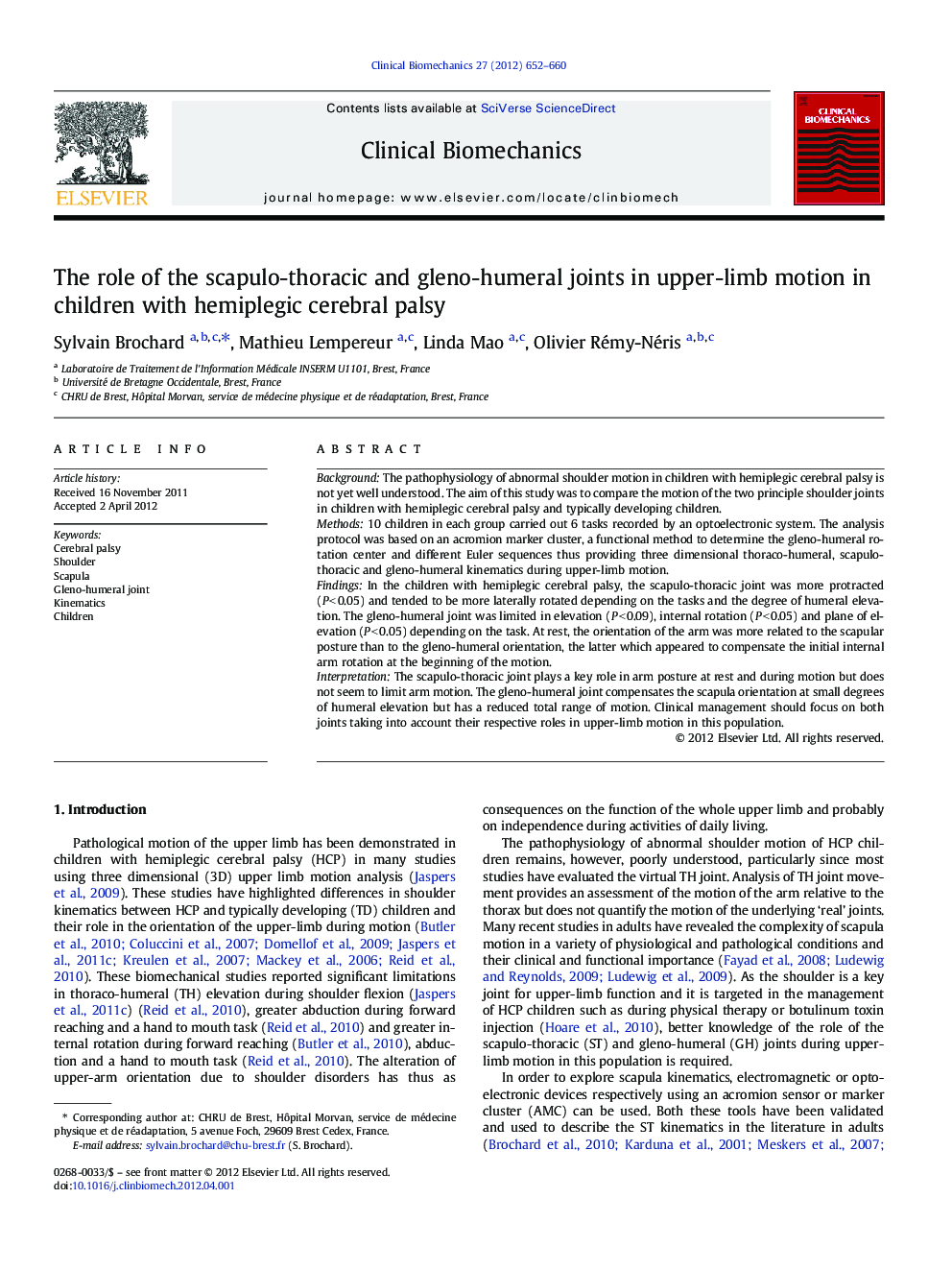| Article ID | Journal | Published Year | Pages | File Type |
|---|---|---|---|---|
| 4050778 | Clinical Biomechanics | 2012 | 9 Pages |
BackgroundThe pathophysiology of abnormal shoulder motion in children with hemiplegic cerebral palsy is not yet well understood. The aim of this study was to compare the motion of the two principle shoulder joints in children with hemiplegic cerebral palsy and typically developing children.Methods10 children in each group carried out 6 tasks recorded by an optoelectronic system. The analysis protocol was based on an acromion marker cluster, a functional method to determine the gleno-humeral rotation center and different Euler sequences thus providing three dimensional thoraco-humeral, scapulo-thoracic and gleno-humeral kinematics during upper-limb motion.FindingsIn the children with hemiplegic cerebral palsy, the scapulo-thoracic joint was more protracted (P < 0.05) and tended to be more laterally rotated depending on the tasks and the degree of humeral elevation. The gleno-humeral joint was limited in elevation (P < 0.09), internal rotation (P < 0.05) and plane of elevation (P < 0.05) depending on the task. At rest, the orientation of the arm was more related to the scapular posture than to the gleno-humeral orientation, the latter which appeared to compensate the initial internal arm rotation at the beginning of the motion.InterpretationThe scapulo-thoracic joint plays a key role in arm posture at rest and during motion but does not seem to limit arm motion. The gleno-humeral joint compensates the scapula orientation at small degrees of humeral elevation but has a reduced total range of motion. Clinical management should focus on both joints taking into account their respective roles in upper-limb motion in this population.
